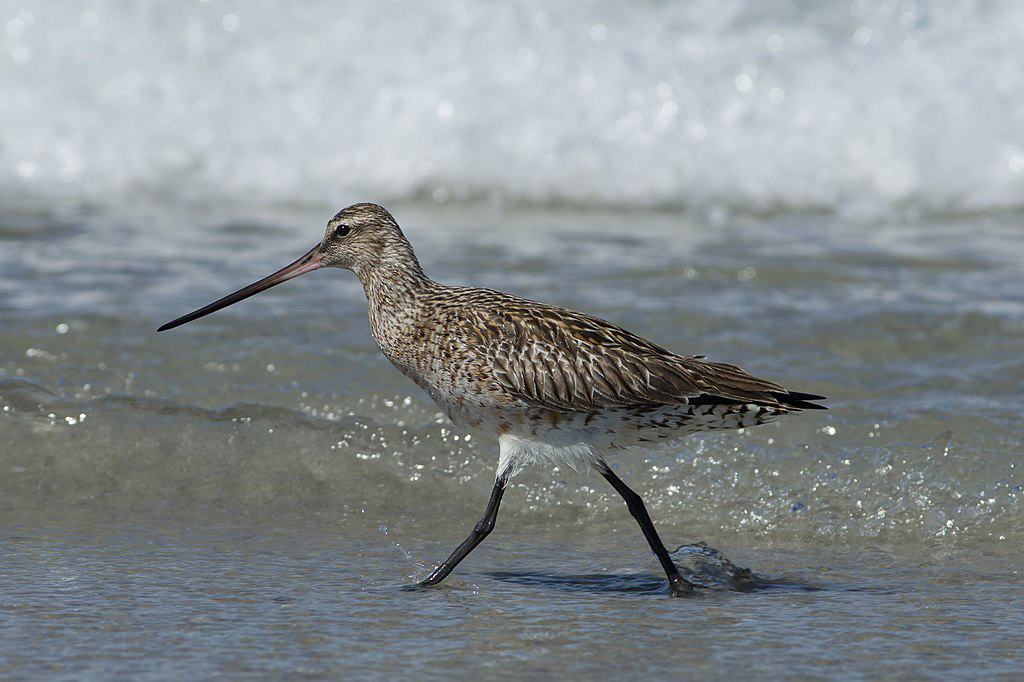Migration represents one of nature’s most spectacular phenomena, with birds traversing astonishing distances across continents and oceans. While many animals migrate seasonally, birds stand apart for the extraordinary lengths of their journeys. These avian travelers navigate using celestial cues, Earth’s magnetic field, landmarks, and even their sense of smell to find their way across thousands of miles. This article explores 14 remarkable bird species that undertake the longest migrations on the planet, surpassing the migratory feats of any other animal group. From the Arctic Tern’s pole-to-pole voyage to the Bar-tailed Godwit’s non-stop oceanic marathon, these winged wanderers demonstrate nature’s most impressive examples of endurance, navigation, and survival instinct.
Arctic Tern The World’s Greatest Migratory Champion

The Arctic Tern (Sterna paradisaea) holds the undisputed title for the longest migration of any animal on Earth. These slender, white birds with distinctive black caps travel an astonishing 44,000-59,000 miles annually in a round-trip journey between their Arctic breeding grounds and Antarctic feeding areas. Essentially following an endless summer, Arctic Terns can see more daylight than any other creature. Their remarkable longevity—living up to 30 years—means a single bird may fly the equivalent distance of going to the moon and back three times during its lifetime. What makes this achievement even more impressive is their relatively small size, weighing only 3-4 ounces. Through tracking studies, scientists have discovered these birds don’t simply fly straight routes but zigzag across oceans to take advantage of prevailing wind systems, demonstrating sophisticated navigation abilities.
Bar-tailed Godwit The Non-stop Flying Machine
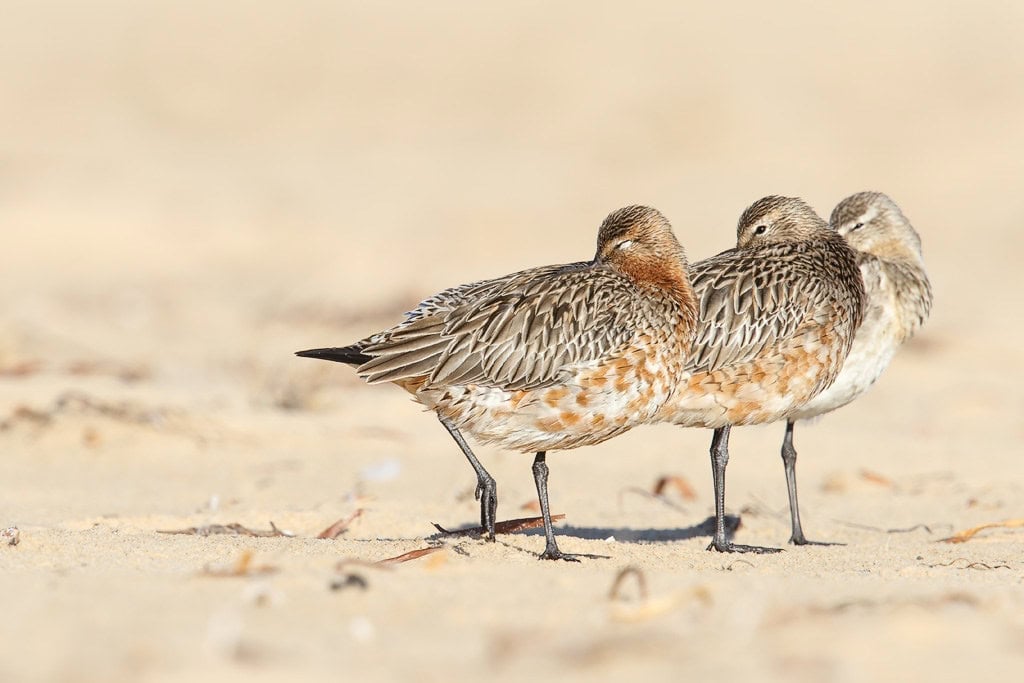
The Bar-tailed Godwit (Limosa lapponica) performs perhaps the most physically demanding migration of any bird. Unlike most migratory species that stop to rest and feed, these remarkable shorebirds fly non-stop over the Pacific Ocean from Alaska to New Zealand—a journey spanning approximately 7,000-8,000 miles. In 2020, researchers tracked a male Bar-tailed Godwit that flew 7,500 miles over 11 days without a single stop for food, water, or rest, setting a new world record for avian endurance flight. To prepare for this extraordinary journey, godwits undergo remarkable physiological changes, nearly doubling their body weight with stored fat and shrinking non-essential organs like their digestive system to reduce weight. Their specialized metabolism allows them to burn fat extremely efficiently while in flight, and they can even sleep with one hemisphere of their brain at a time while continuing to fly.
Great Frigatebird The Aerial Marathon Sleeper
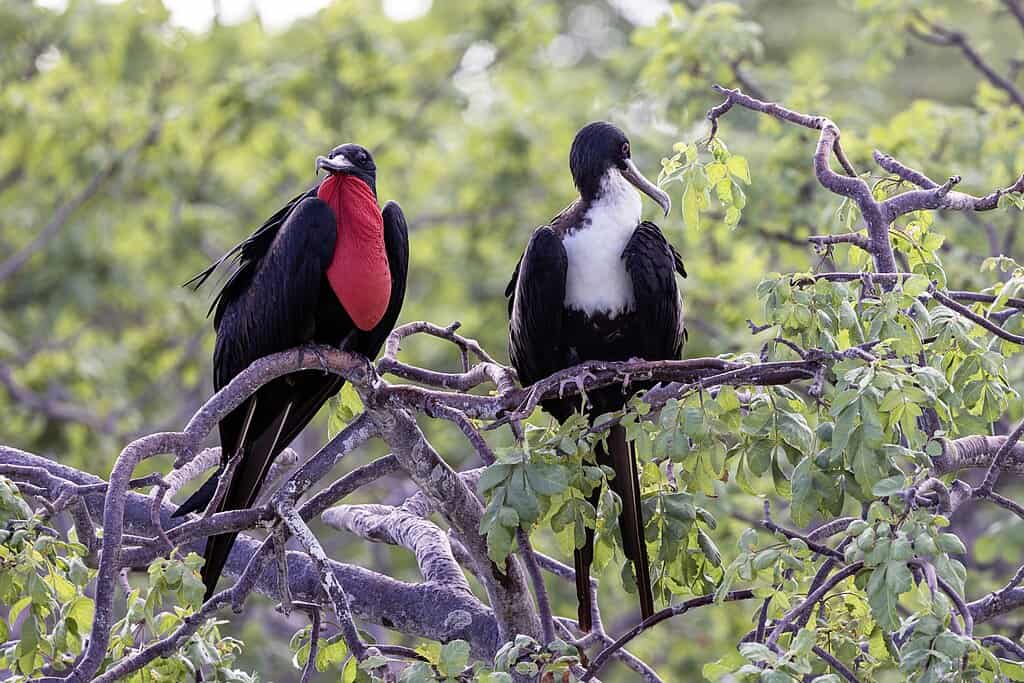
The Great Frigatebird (Fregata minor) stands out not just for migration distance but for its exceptional ability to stay aloft for extended periods. These seabirds with distinctive inflatable red throat pouches and wingspan reaching 7.5 feet can remain continuously airborne for up to two months. During tracking studies in the Indian Ocean, researchers discovered frigatebirds fly distances of up to 40,000 miles annually in search of food and nesting sites. What makes their journeys particularly remarkable is their ability to sleep while flying—they can enter brief periods of unihemispheric sleep, where one half of the brain sleeps while the other half remains alert. Unlike many seabirds, frigatebirds cannot land on water despite spending months over open ocean, as their feathers aren’t waterproof. They rely on updrafts and thermals to soar effortlessly, flying as high as 12,000 feet, where they utilize different wind patterns to conserve energy.
Albatrosses The Oceanic Circumnavigators

Several albatross species rank among the world’s most impressive migratory birds, with the Wandering Albatross (Diomedea exulans) and Grey-headed Albatross (Thalassarche chrysostoma) leading the way. These majestic seabirds can circumnavigate the entire Southern Ocean multiple times per year, covering distances of 75,000-85,000 miles annually. The Wandering Albatross boasts the largest wingspan of any living bird—up to 11 feet—allowing it to ride ocean winds with minimal energy expenditure. Remarkably, a single journey might involve crossing three ocean basins without touching land. Satellite tracking has revealed that young albatrosses often spend the first 5-10 years of their lives entirely at sea, never touching land while they perfect the art of oceanic soaring. Their specialized shoulder-locking mechanism enables them to keep their wings extended for hours without muscle fatigue, while their tubular nostrils help excrete excess salt from the seawater they consume—adaptations perfectly suited for their transoceanic lifestyle.
Sooty Shearwater The Deep-Diving Migrant

The Sooty Shearwater (Ardenna grisea) combines one of the world’s longest migrations with remarkable diving abilities. These medium-sized seabirds undertake a figure-eight migration pattern in the Pacific Ocean, traveling approximately 40,000 miles annually between breeding colonies in the Southern Hemisphere (New Zealand, Chile, and the Falkland Islands) and feeding grounds in the North Pacific. Traveling up to 620 miles daily, Sooty Shearwaters form massive flocks that once darkened skies along the California coast—historically mistaken for smoke clouds by early explorers. What distinguishes these birds is their dual mastery of air and sea; they can dive to depths of 200 feet underwater in pursuit of fish, squid, and krill. During migration, they’ve adapted to continuous flight by developing the ability to take hundreds of micro-naps daily, each lasting only seconds but collectively providing enough rest to maintain their long-distance flight. Their migration follows major oceanic currents and upwellings that bring nutrient-rich waters—and abundant food—to the surface.
Ruddy Turnstone The Intercontinental Pathfinder
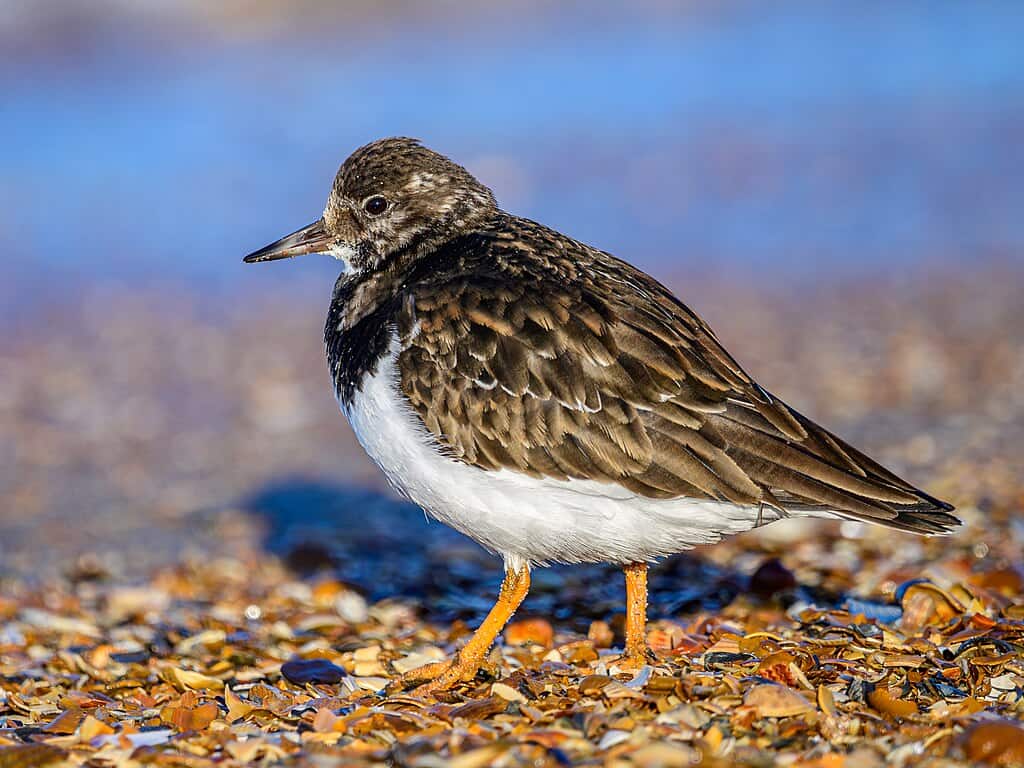
The Ruddy Turnstone (Arenaria interpres) may be small in size but undertakes one of the most geographically complex migrations of any bird. These stocky, calico-patterned shorebirds travel between Arctic breeding grounds and wintering areas that span six continents, with some individuals migrating more than 15,000 miles annually. Named for their feeding behavior of turning over stones and debris with their specialized bill to find invertebrates, Ruddy Turnstones display remarkable site fidelity, returning to the exact same beaches year after year. Research has shown they possess exceptional navigational abilities, including detecting Earth’s magnetic field and memorizing detailed visual landmarks along their routes. One of their most fascinating adaptations is their ability to rapidly double their body weight before migration, storing enough fat to fuel non-stop flights of up to 3,000 miles. Studies have documented turnstones living 20+ years, meaning lifetime migration distances can exceed 300,000 miles—evidence of their extraordinary survival skills.
Red Knot The Hemispheric Time-Traveler

The Red Knot (Calidris canutus) undertakes one of the most precisely timed migrations in the bird world, traveling up to 20,000 miles annually between the Arctic Circle and the southern tips of South America, Africa, and Australia. Of the six recognized subspecies, the Rufa Red Knot makes perhaps the most remarkable journey—flying from Tierra del Fuego to breeding grounds in the Canadian Arctic, with a critical stopover at Delaware Bay where they feast on horseshoe crab eggs to refuel. This stopover illustrates the Red Knot’s extraordinary biological synchronization: they arrive exactly when horseshoe crabs spawn, having traveled for days using stored body fat. Red Knots undergo dramatic physical transformations during migration, not only increasing their weight by up to 80% but also enlarging their flight muscles and heart while simultaneously shrinking their digestive organs to minimize weight. Research has shown these birds can detect changes in weather systems thousands of miles away, allowing them to time departures to coincide with favorable winds. Unfortunately, several Red Knot populations have declined by more than 70% in recent decades, making conservation of their critical stopover sites an urgent priority.
Northern Wheatear The Desert-Crossing Songbird

The Northern Wheatear (Oenanthe oenanthe) defies expectations about songbird migration capabilities. Despite weighing only 0.8 ounces—about as much as a stack of 20 quarters—these small insect-eating birds undertake one of the most formidable migrations of any land bird. Northern Wheatears that breed in Alaska cross Asia and the entire Arabian Desert to reach wintering grounds in eastern Africa, a round-trip journey of approximately 18,000 miles. Meanwhile, those breeding in eastern Canada travel across the Atlantic Ocean, Europe, and the Sahara Desert to reach western Africa. What makes this feat particularly astonishing is that, unlike seabirds that can rest on water, wheatears must complete hazardous desert and ocean crossings in single flights. Geolocator studies have revealed these birds can sustain flight speeds of 30-60 mph during favorable wind conditions and travel up to 180 miles per day. To navigate across such vast and varied landscapes, they combine stellar navigation, magnetic sense, and visual landmarks. The Northern Wheatear’s migration exemplifies how even diminutive songbirds can evolve extraordinary migratory abilities when ecological conditions favor such behavior.
Lesser Yellowlegs The Wetland Connector

The Lesser Yellowlegs (Tringa flavipes) conducts one of the Western Hemisphere’s most extensive shorebird migrations, traveling up to 15,000 miles annually between Arctic breeding territories and wintering grounds at the southern tip of South America. These elegant, long-legged waders serve as biological connectors between wetland ecosystems across the Americas, from tundra ponds to tropical mangroves. What makes their migration particularly challenging is its dependence on increasingly fragmented wetland habitats that serve as critical stopover sites. Research using lightweight geolocators has revealed that Lesser Yellowlegs frequently make non-stop flights of 1,500-2,000 miles between major wetland complexes. Unlike some migratory birds that travel in large flocks, yellowlegs often migrate either solitarily or in small, loose groups, relying on innate navigational abilities rather than social knowledge. Their distinctively loud, ringing calls serve not only for communication but also as acoustic beacons that help them locate suitable wetlands from high altitudes during migration. Unfortunately, populations have declined by nearly 70% since the 1970s due to wetland degradation and hunting pressure on their Caribbean wintering grounds.
Pectoral Sandpiper The Intercontinental Breeding Strategist

The Pectoral Sandpiper (Calidris melanotos) employs one of the most unusual migration and breeding strategies of any bird. These medium-sized shorebirds migrate up to 18,000 miles annually between South American wintering grounds and Arctic breeding territories. What makes their journey particularly remarkable is their extraordinary breeding behavior—male Pectoral Sandpipers sometimes cross between continents during a single breeding season in search of mating opportunities. Using satellite transmitters, researchers documented males that bred in Alaska, then flew to northern Russia to breed again in the same season, traversing the Bering Sea and covering up to 8,000 additional miles during this reproductive marathon. During these intense breeding phases, males survive on minimal sleep—as little as 2-3 hours daily—while maintaining active courtship displays nearly around the clock under the midnight sun. The underlying physiological adaptations appear to involve specialized hormonal changes that allow them to function on extreme sleep deficits. Females, meanwhile, undertake traditional migration routes but must navigate independently of males, showcasing different migration timing and strategies between sexes of the same species.
Short-tailed Shearwater The Trans-Equatorial Navigator
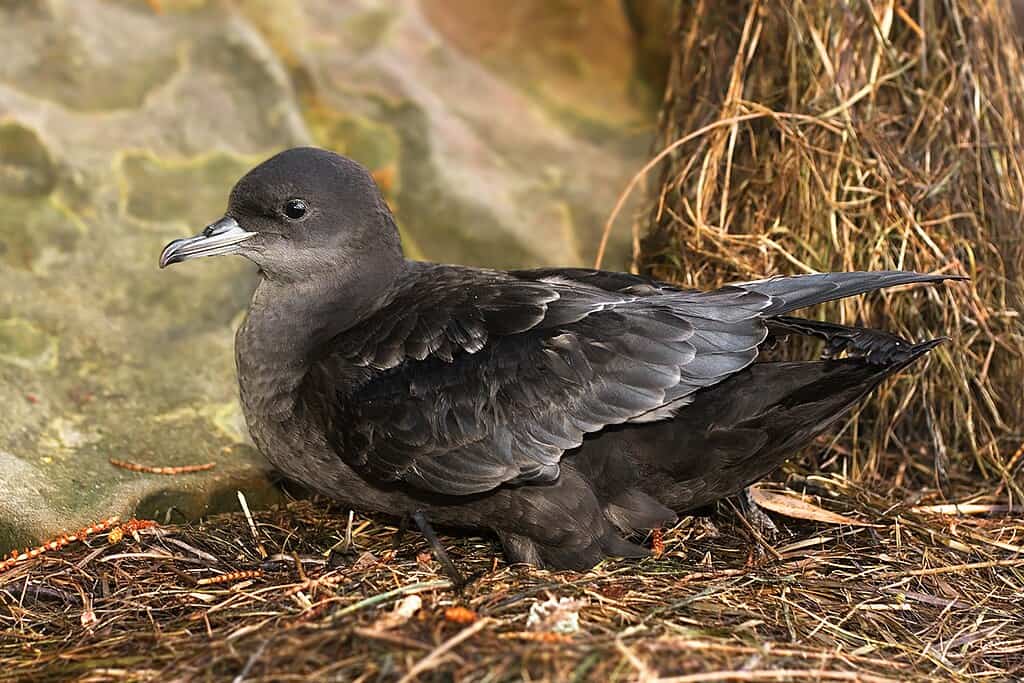
The Short-tailed Shearwater (Ardenna tenuirostris) demonstrates one of the most synchronized mass migrations in the avian world. Approximately 23 million of these seabirds breed on islands around Australia and Tasmania before undertaking a figure-eight migration of about 30,000 miles that crosses the equator twice. After breeding, they travel north through the western Pacific to reach rich feeding grounds in the Arctic waters near Alaska before returning via the eastern Pacific in a remarkable display of transoceanic navigation. What distinguishes Short-tailed Shearwaters is their extraordinary population synchronicity—millions depart their breeding colonies within a span of just 10-14 days, creating one of nature’s great spectacles. Their migration timing is so precise that Indigenous Australian cultures traditionally used their arrival to mark seasonal changes. These birds can detect and follow oceanic productivity gradients, essentially tracking blooms of marine productivity across the Pacific. During their long-distance flights, they employ a distinctive flight technique called “dynamic soaring,” exploiting the boundary layer between air masses with different velocities to extract energy from the atmosphere and reduce flight costs. Sadly, climate change-driven shifts in ocean temperatures and productivity patterns are beginning to disrupt the delicate timing of their migrations relative to food availability.
Northern Pintail The Continental Wetland Explorer
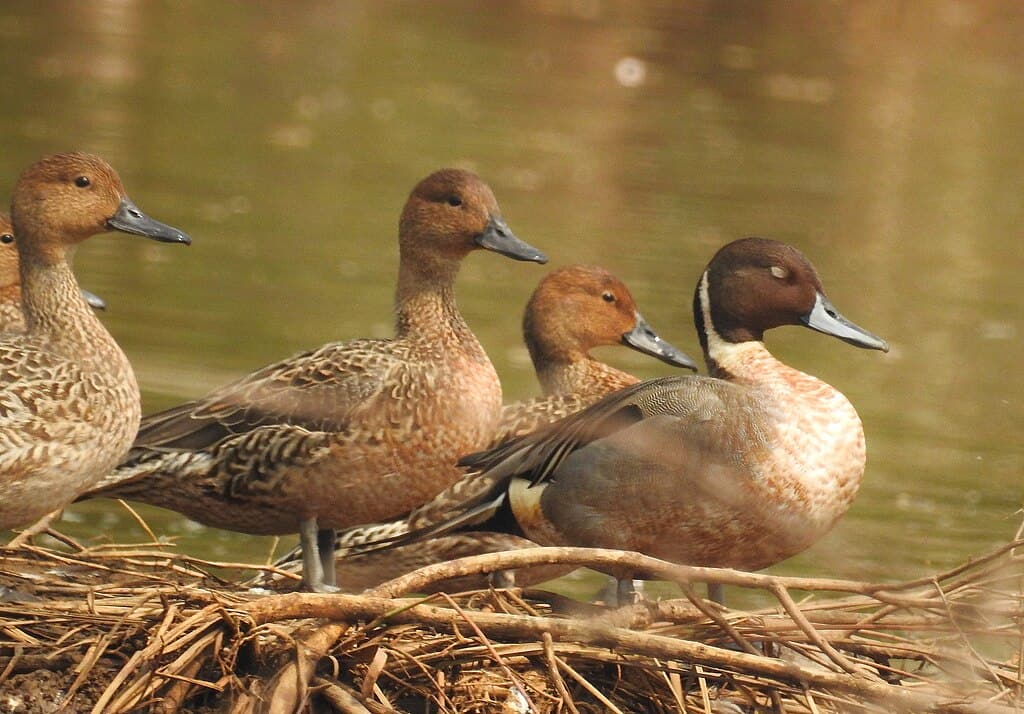
The Northern Pintail (Anas acuta) stands out as one of the most wide-ranging migratory duck species, with some populations traveling up to 11,000 miles annually between breeding and wintering grounds. These elegant, slender-necked ducks with distinctive pointed tail feathers breed across northern regions of North America, Europe, and Asia, with some populations wintering as far south as sub-Saharan Africa and Central America. Unlike many migratory birds that follow relatively fixed routes, Northern Pintails demonstrate remarkable flexibility in their migration strategies, readily exploring new pathways and wintering locations in response to changing water conditions. Satellite tracking has revealed that pintails breeding in Alaska regularly cross the Bering Strait to winter in Asia, while others take a more traditional route to California—showing how a single population maintains multiple migration traditions. Their capacity to navigate between small, isolated wetlands across vast landscapes stems from exceptional spatial memory coupled with the ability to detect water from great distances using polarized light patterns. Northern Pintails can fly at sustained speeds of 65 mph, helping them rapidly cover long distances between suitable wetlands. Their migration timing closely tracks the seasonal availability of shallow wetlands where they can reach submerged vegetation by “upending” without fully diving.
Swainson’s Hawk The Grassland Glider

The Swainson’s Hawk (Buteo swainsoni) conducts one of the longest migrations of any raptor, traveling up to 14,000 miles annually between North American breeding grounds and Argentine wintering areas. Unlike many birds that migrate primarily at night, these hawks migrate during daylight hours, forming spectacular “kettles” of thousands of birds that spiral upward on thermal currents before gliding south. Their migration route—known as the Raptor Highway—follows mountain ranges and grasslands through Central America where geographical features create updrafts that allow energy-efficient soaring. What makes Swainson’s Hawks particularly fascinating is their dietary shift during migration and winter; while primarily consuming small mammals during breeding season, they become almost exclusively insectivorous during migration and winter, following and feeding on massive grasshopper and dragonfly emergences. This dietary flexibility enables them to find abundant food resources throughout their hemispheric journey. Satellite tracking has revealed that individual hawks maintain remarkably consistent migration timing year after year, with many returning to the exact same winter territories in Argentine pampas grasslands. Their migration represents one of the most dramatic examples of connectivity between North and South American grassland ecosystems, highlighting the importance of international conservation efforts to protect the entire migratory corridor.
Common Tern The Transatlantic Pathfinder

The Common Tern (Sterna hirundo) conducts one of the most geographically extensive migrations among terns, traveling up to 12,000 miles annually between Northern Hemisphere breeding areas and Southern Hemisphere wintering grounds. While not matching the extreme distances of its relative the Arctic Tern, the Common Tern’s migration is notable for the diversity of routes taken by different populations. North American terns primarily winter along the South American coast, while European populations cross the Sahara Desert to reach west and southern African coasts.
Conclusion
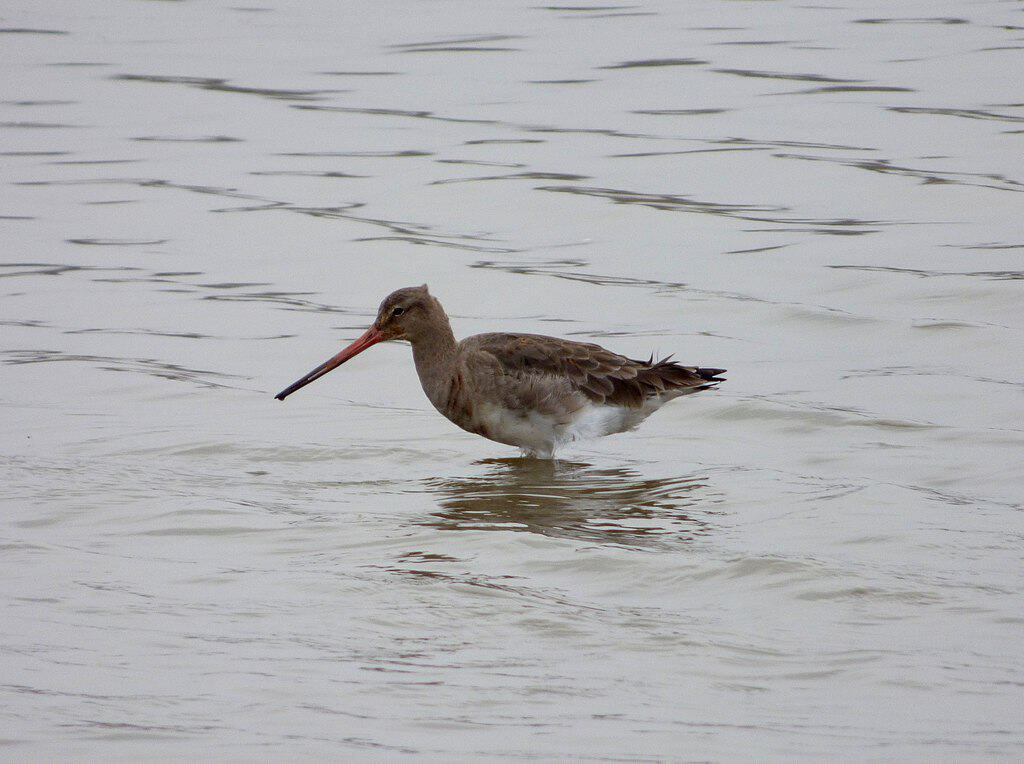
The birds featured in this article exemplify the awe-inspiring power of migration, showcasing extreme endurance, intricate navigation, and astonishing adaptability. Whether crossing oceans non-stop, soaring for months without landing, or timing their journeys to match fleeting food sources, these avian adventurers highlight the complex interplay between biology and the environment. As climate change and habitat loss increasingly threaten critical migratory routes and stopover sites, understanding and protecting these long-distance travelers is more vital than ever. Their epic journeys remind us that no corner of the planet is untouched by the rhythms of migration—and that safeguarding migratory species means protecting the planet as a whole.
- 14 Birds That Migrate Farther Than Any Other Animal - August 15, 2025
- The Science Behind Global Warming: Let’s Separate Fact from Fiction - August 15, 2025
- Circadian Rhythms: The Biological Clocks of Animals - August 14, 2025

